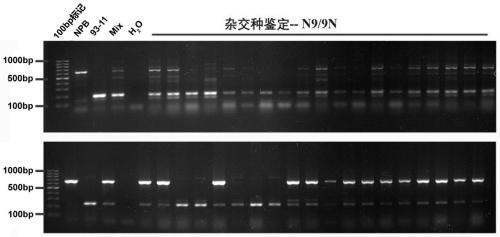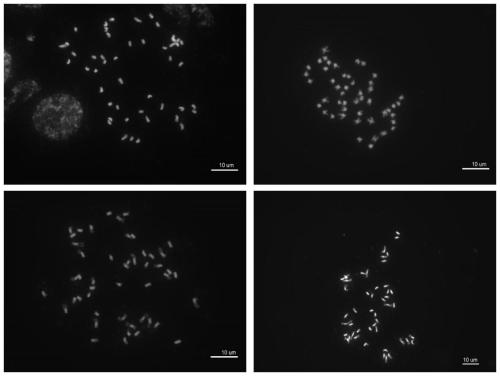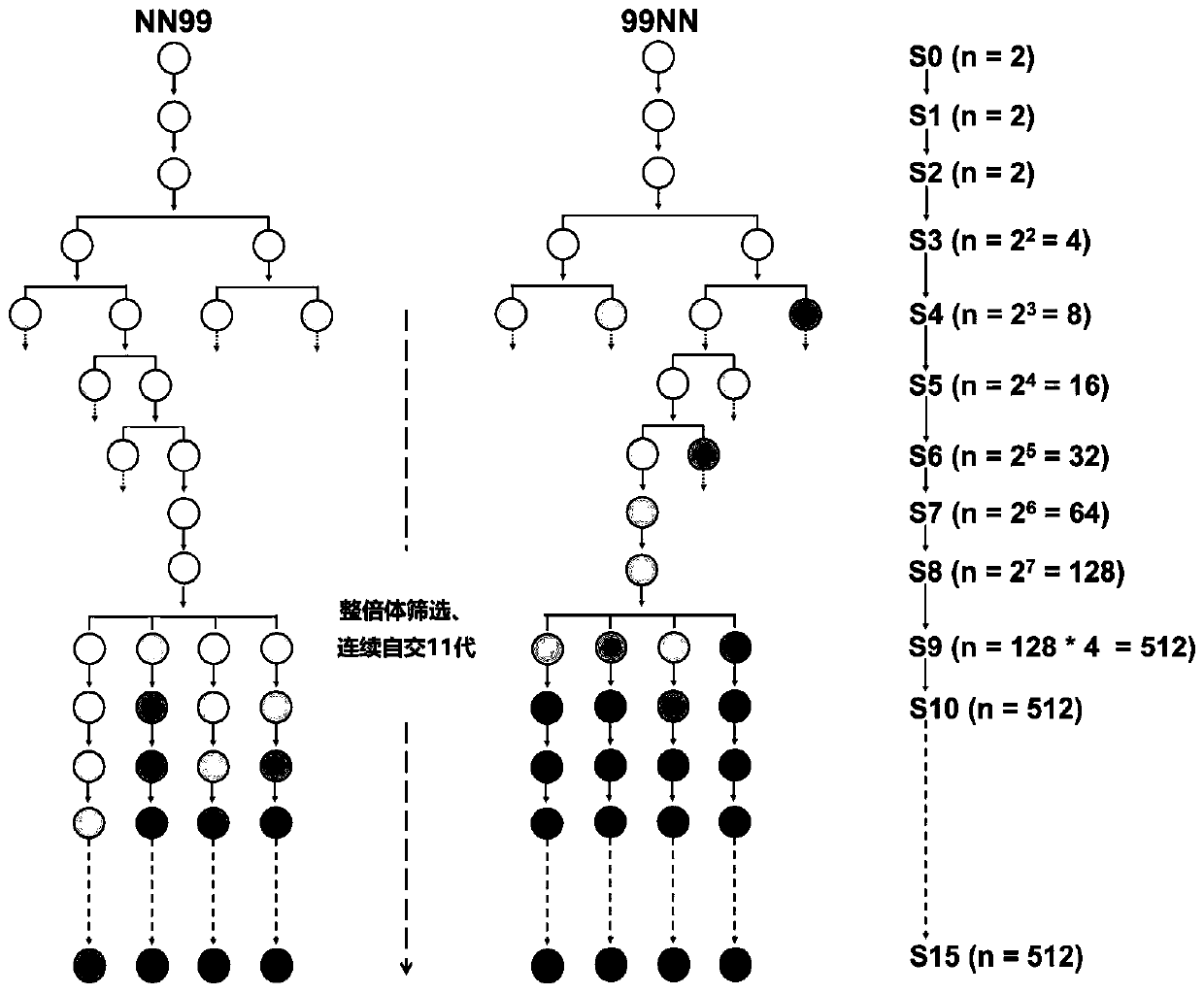Breeding method using tetraploid recombination inbred lines hybridized/doubled between rice indica japonica subspecies
A technology of tetraploid and inbred lines, which is applied in the field of biotechnology and agriculture, can solve the problems of poor improvement of quantitative traits, uncontrollable direction and nature of mutagenesis, and few beneficial mutations, etc., to overcome F1 hybrid sterility, The effect of prominent phenotypic diversity and high genome variation
- Summary
- Abstract
- Description
- Claims
- Application Information
AI Technical Summary
Problems solved by technology
Method used
Image
Examples
Embodiment 1
[0056] Embodiment 1. Breeding using tetraploid recombinant inbred lines of rice indica and japonica interspecies hybridization / doubled
[0057] In this example, a representative indica rice variety 93-11 and a typical japonica rice Nipponbare were crossed in forward and reverse directions, and the young shoots of the forward and reverse F1 hybrids were treated with colchicine to doubling the whole genome. A set of rice indica and japonica subspecies was successfully created Allotetraploid, through 15 consecutive generations of self-breeding, obtained 512 S15 independent segmental allotetraploid recombinant inbred lines of rice indica and japonica subspecies (hereinafter referred to as rice tetraploid recombinant inbred lines) , from which 38 tetraploid recombinant inbred lines of rice with different purpose traits (such as salt tolerance, cold resistance or high nitrogen use efficiency, etc.) were randomly selected for anther culture, fertile diploids were obtained, and whether...
PUM
 Login to View More
Login to View More Abstract
Description
Claims
Application Information
 Login to View More
Login to View More - R&D
- Intellectual Property
- Life Sciences
- Materials
- Tech Scout
- Unparalleled Data Quality
- Higher Quality Content
- 60% Fewer Hallucinations
Browse by: Latest US Patents, China's latest patents, Technical Efficacy Thesaurus, Application Domain, Technology Topic, Popular Technical Reports.
© 2025 PatSnap. All rights reserved.Legal|Privacy policy|Modern Slavery Act Transparency Statement|Sitemap|About US| Contact US: help@patsnap.com



